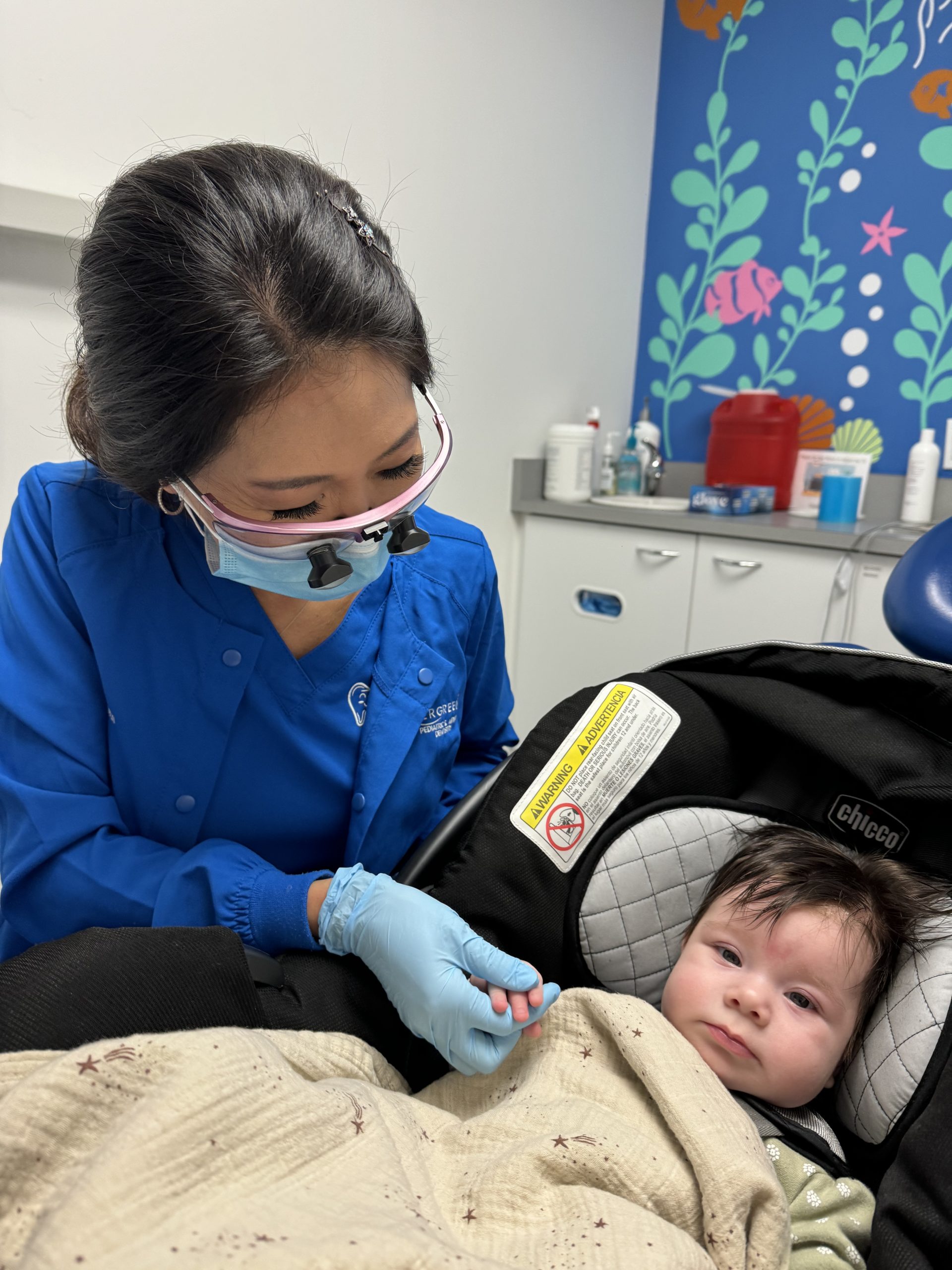Tongue Tie in Infants: Common Myths and Misconceptions Debunked
In the vast expanse of parenting advice, where truth and folklore intertwine like vines, lies the enigmatic realm of tongue tie in infants. This condition, as ancient as it is misunderstood, has been the subject of countless myths and misconceptions that have perplexed parents for generations. Like intrepid explorers, we embark on a quest to untangle these myths, armed with the torch of science and the compass of expert opinion. Join us as we illuminate the shadowy corners of misunderstanding and chart a course toward clarity and knowledge.
Tongue Tie Will Always Affect Breastfeeding
The notion that tongue tie will invariably affect breastfeeding is one of the common myths surrounding this condition. While it’s true that tongue tie, or ankyloglossia, can present challenges to breastfeeding due to restricted tongue movement, it doesn’t necessarily mean that all babies with this condition will struggle. The degree to which breastfeeding is impacted varies widely among infants with tongue tie. Some may indeed face difficulties latching and sucking effectively, leading to issues such as inadequate milk intake and discomfort for the mother. However, others might adapt their feeding techniques or experience minimal to no feeding problems at all. This variation underscores the importance of evaluating each case individually rather than assuming a universal outcome for all tongue-tied babies.
Moreover, the belief that tongue tie always necessitates intervention, specifically surgical, to ensure successful breastfeeding is another misconception. While procedures like frenotomy, where the tight frenulum is cut, can offer relief in more severe cases, not all situations require such measures. Many mothers and babies benefit from non-surgical support strategies, including guidance from lactation consultants who can provide specialized breastfeeding techniques and positioning advice. These interventions can significantly improve the breastfeeding experience without the need for medical treatment. Parents need to consult healthcare professionals to understand the best course of action tailored to their child’s specific needs.
Dispelling myths about tongue ties and breastfeeding is crucial for providing accurate information and support to affected families. Understanding that tongue tie does not automatically doom breastfeeding endeavors allows parents to approach the situation with a more informed and hopeful perspective. By recognizing the diversity of experiences and outcomes associated with tongue tie, parents can seek appropriate assistance and explore various options, ensuring both mother and baby navigate the breastfeeding journey with confidence and comfort.

Tongue Tie in Infants
Tongue Tie is Rarely Seen and Hardly Worth Worrying About
One common myth surrounding tongue tie in infants is the belief that it is a rare condition and, therefore, hardly worth worrying about. This misconception can lead to underdiagnosis and a lack of necessary intervention, potentially affecting a child’s breastfeeding ability and overall oral development. In reality, tongue tie, or ankyloglossia, is not as uncommon as many people think. Studies suggest varying prevalence rates, but it’s generally accepted that tongue tie affects a significant number of newborns. The condition is characterized by a short, tight band of tissue (lingual frenulum) that tethers the baby’s tongue tip to the floor of the mouth, which can restrict tongue movement.
This misconception may stem from a lack of awareness or understanding of tongue tie and its implications. While it’s true that not all cases of tongue tie cause problems, for those affected, the impact can be significant. Difficulties with breastfeeding are among the most immediate concerns, as a baby’s inability to latch effectively can lead to inadequate nutrition, slow weight gain, and distress for both the infant and the mother. Beyond breastfeeding, untreated tongue ties can also contribute to challenges with speech development, dental health, and the ability to perform basic oral tasks like licking an ice cream cone or kissing.
Debunking this myth is crucial for ensuring that infants with tongue ties receive the attention and care they need. Early detection and, when necessary, intervention, can prevent feeding difficulties and support optimal oral development. Healthcare providers play a key role in educating parents about the signs of tongue tie and the potential need for assessment by a specialist. By promoting awareness and understanding, we can ensure that tongue tie is recognized as a condition worthy of consideration and appropriate management, rather than being dismissed as a rare or insignificant issue.
The Only Solution to Tongue Tie is Surgical Intervention
A prevalent myth about tongue ties in infants is that the only solution to this condition is surgical intervention, often leading parents to worry about the necessity of immediate and invasive procedures for their newborns. In reality, while surgery, such as a frenotomy, can be an effective treatment for severe cases of tongue tie where the infant struggles significantly with breastfeeding or bottle-feeding, it is not the sole option. Many infants with tongue ties can successfully breastfeed with the help of non-surgical interventions, including specialized breastfeeding techniques and exercises designed to improve the baby’s tongue mobility. These methods often involve guidance from lactation consultants who can provide personalized advice and support to mothers facing feeding challenges.
Moreover, the decision to pursue surgical intervention is not made lightly and involves a comprehensive evaluation of the infant’s specific situation. Factors such as the severity of the tongue tie, the baby’s ability to feed effectively, and the presence of any associated symptoms are carefully considered. In some cases, a wait-and-see approach may be recommended, especially if the tongue tie does not severely impact feeding or if it is expected that the condition may improve on its own over time. This underscores the importance of individualized care and the need to debunk the myth that surgery is the inevitable path for all infants diagnosed with tongue tie.
In addition to exploring non-surgical options and individual assessments, education plays a crucial role in dispelling myths about tongue ties. By providing accurate information and raising awareness about the range of treatments available, healthcare providers can help parents make informed decisions about their child’s care. Understanding that surgical intervention is just one of several potential solutions allows families to approach tongue-tie management with a more balanced perspective, ensuring that the well-being and comfort of both mother and baby are prioritized.
Tongue Tie Fixes Itself Over Time; No Action is Needed
One widespread myth about tongue tie in infants is the belief that it resolves itself over time, negating the need for any intervention. This misconception can lead to a lack of action when addressing the condition, potentially affecting a child’s feeding, speech development, and overall well-being. While it’s true that some minor cases of tongue tie might not significantly impact a child’s ability to feed or speak, assuming that all forms of tongue tie will spontaneously resolve can prevent those who could benefit from treatment from receiving the necessary care. The variability in how tongue tie affects infants underscores the importance of individual assessments and consultations with healthcare professionals to determine the best course of action.
Ignoring a tongue tie based on the assumption that it will fix itself may result in missed opportunities for early intervention, which could alleviate feeding difficulties and support optimal oral development. For some infants, tongue tie can lead to challenges with breastfeeding, including inadequate milk intake, slow weight gain, and discomfort for the nursing mother. These issues can have immediate effects on an infant’s nutrition and growth, as well as long-term implications if left unaddressed. Additionally, as the child grows, untreated tongue ties may contribute to speech difficulties and dental problems, further emphasizing the need for proactive management rather than a wait-and-see approach.
Debunking the myth that tongue ties invariably correct themselves without intervention is crucial for ensuring that infants and their families receive appropriate support and care. By fostering awareness about the potential impacts of tongue ties and the benefits of seeking professional advice, parents can make informed decisions about their children’s health. Understanding that each case of tongue tie is unique and may require different management strategies allows for tailored approaches that prioritize the well-being of the child, helping them achieve successful feeding experiences and healthy oral development.
Any Practitioner Can Diagnose and Treat Tongue Tie Accurately
The belief that any practitioner can accurately diagnose and treat tongue ties in infants is a widespread myth that needs to be addressed. Tongue tie, or ankyloglossia, is a condition that can significantly affect a baby’s ability to breastfeed effectively and may have implications for speech development and oral health later in life. However, the diagnosis and management of tongue ties require specific expertise and experience. Pediatricians, lactation consultants, and dental professionals who specialize in infant oral health and have received training in the identification and treatment of tongue ties are best equipped to provide accurate diagnoses and recommend appropriate interventions. This specialized knowledge ensures that families receive advice and treatment options based on the latest evidence and best practices in pediatric and dental care.
Furthermore, the misconception that any healthcare provider can offer treatment for tongue tie overlooks the nuances of the condition and the individual needs of each baby. Surgical interventions, such as frenotomy or frenuloplasty, should be considered carefully and performed by professionals with experience in these procedures to minimize risks and promote optimal outcomes. Non-surgical approaches, including breastfeeding support and exercises to improve tongue mobility, also require guidance from practitioners familiar with tongue tie and its impact on infant feeding and development.
Debunking this myth is crucial for ensuring that infants with tongue tie and their families receive the highest standard of care. By recognizing the importance of specialized training and experience in the diagnosis and treatment of tongue tie, parents can make informed decisions about their child’s health and well-being. Consulting with qualified professionals allows for a comprehensive assessment of the baby’s condition, tailored advice, and appropriate interventions that address the unique challenges presented by tongue tie.

Tongue Tie in Infants
Treating Tongue Tie Guarantees Immediate Improvement in Breastfeeding
The belief that treating tongue ties in infants guarantees immediate improvement in breastfeeding is a myth that requires careful unpacking. While addressing tongue ties can indeed facilitate better latch and feeding mechanics, it’s critical to understand that improvements in breastfeeding may not be instantaneous. The process of breastfeeding is complex and involves a coordinated effort between the mother and the baby. Even after the physical restriction of the tongue tie is resolved through treatment, both parties need time to adapt to new feeding positions and techniques. Moreover, babies with a history of tongue tie might require additional support to strengthen their sucking reflex and learn effective feeding behaviors, underscoring the fact that patience and persistence are key components of the journey toward successful breastfeeding post-treatment.
Additionally, the impact of treating tongue tie extends beyond the mechanical aspects of breastfeeding. For some infants, the procedure can alleviate discomfort associated with feeding, which can, in turn, improve their willingness to feed and overall feeding experience. However, parents need to seek guidance from lactation consultants or pediatricians who can provide tailored advice and support during this transition period. These professionals can offer strategies to address potential challenges such as nipple confusion or preference for bottle feeding over breastfeeding, which might arise even after the physical barrier of tongue tie has been addressed. This holistic approach ensures that the needs of both the mother and infant are met, promoting a more positive and successful breastfeeding relationship.
Debunking the myth that treating tongue ties results in immediate improvement in breastfeeding emphasizes the importance of setting realistic expectations for parents. It highlights the need for comprehensive support that addresses both the physical and emotional aspects of breastfeeding. By understanding that progress may be gradual and that challenges are part of the process, parents can approach the situation with a balanced perspective. This knowledge empowers them to make informed decisions about their child’s care and fosters resilience and confidence as they navigate the complexities of breastfeeding post-tongue tie treatment.
Conclusion
The journey through the myths and misconceptions surrounding infant tongue ties reveals a landscape rich with complexity and individuality. As we emerge from the labyrinth of lore, we’re reminded that every child’s story is unique, and blanket statements rarely hold. By seeking out accurate information, consulting with specialists, and making informed decisions, parents can navigate the challenges of tongue-tie with confidence and grace. In debunking these common myths, we hope to empower families with the knowledge to face tongue tie not as an insurmountable obstacle, but as a manageable aspect of their child’s early life. Remember, the path to understanding is paved with questions, and in seeking answers, we find not only solutions but also peace of mind. So, let us continue the conversation and debunk more myths together, one question at a time. Let’s work towards fostering a society that supports informed decision-making and evidence-based care for our most precious little ones. Let’s keep debunking.
Evergreen Pediatric Dentistry
https://www.google.com/maps?cid=14720788683151219551
12910 Totem Lake Blvd NE #103, Kirkland, WA 98034, United States
(425) 814-3196
https://evergreenkidsdentist.com/


